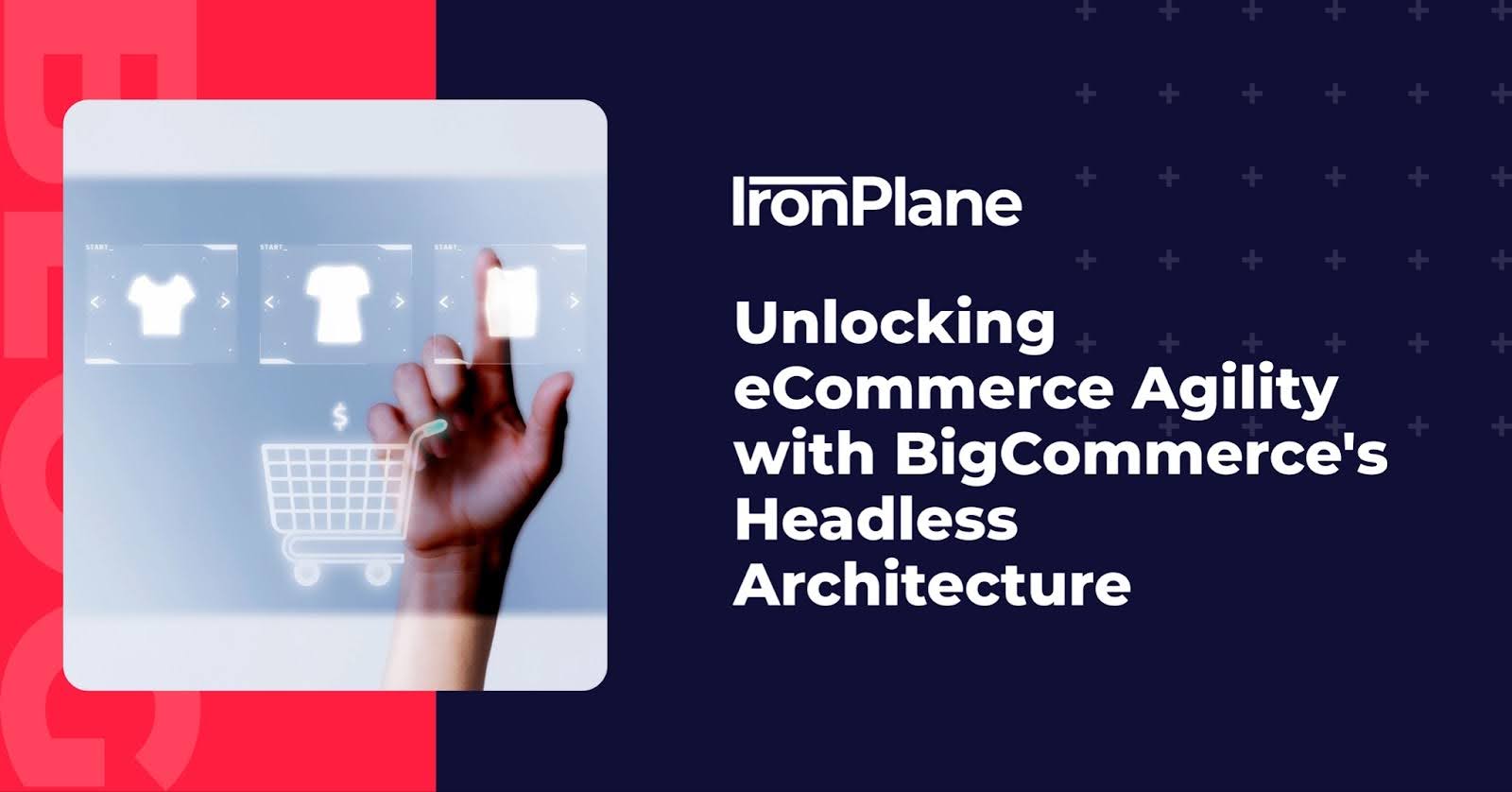Headless Magento: Revolutionizing E-commerce with PWA
E-commerce is changing fast, and Headless Magento with Progressive Web Apps (PWAs) is leading the way. Let's explore how this tech combo is making online shopping better for everyone.
6 min read
 Jeff Zoldy
:
October 28, 2024
Jeff Zoldy
:
October 28, 2024

In today's fast online world, eCommerce businesses are always trying to make their websites better and faster for customers. One new solution that's making a big difference is called headless commerce. This new way of building online stores is changing how they work, making them more flexible, faster, and better performing. Let's look at what headless commerce is and why it's becoming so important for businesses that want to stay ahead in the competitive world of online shopping.
| Aspect | Benefit |
|---|---|
| Architecture | Separate front-end and back-end for more flexibility |
| Performance | Much faster site speed and responsiveness |
| SEO | Better search engine rankings because of faster loading |
| Customization | More ability to create unique user experiences |
| Scalability | Better prepared to grow and use new technologies |
Headless commerce is a new way of building online stores that separates the part customers see (the front-end) from the part that does all the work behind the scenes (the back-end). This separation allows businesses to be more flexible in how they show their products and interact with customers.
Unlike old-style online stores where everything is connected tightly, headless commerce uses special connectors called APIs to link the front-end and back-end. This means developers can use any programming language or tools they want for the front-end, while the back-end takes care of things like keeping track of inventory, processing payments, and managing orders.
This flexibility lets businesses create custom experiences for different devices, like websites, mobile apps, and even smart devices, all while keeping the same back-end system. It's especially good for businesses with complex needs or those wanting to provide a smooth experience across many different channels.
eCommerce consulting experts often suggest headless commerce for businesses that want to create unique and engaging customer experiences across multiple channels.
One of the biggest benefits of headless commerce is how it makes websites faster and perform better. In online shopping, every second counts. Studies show that if a page takes just 1 second longer to load, 7% fewer people will buy something. Also, 40% of visitors will leave a site that takes more than 3 seconds to load.

Headless commerce makes sites faster and perform better in several ways:
By using these advantages, businesses can make their pages load much faster and give customers a smoother, more responsive experience. This improvement in performance not only makes customers happier but also helps the website rank better in search engines.
Also, because the front-end and back-end are separate in headless commerce, it's easier to update and maintain the website. Changes can be made to the front-end without affecting the back-end, and vice versa, which means new features and improvements can be added more quickly.
eCommerce replatforming to a headless system can be a smart move for businesses that want to make their online stores perform better and stay competitive in the digital marketplace.
Search engine optimization (SEO) is very important for eCommerce success, and headless commerce offers several advantages in this area. Faster site speed, which is a key factor in how search engines rank websites, is just the start.

Headless commerce improves SEO in these ways:
These SEO benefits can result in higher visibility in search results, bringing more organic traffic to your eCommerce site. The flexibility of headless commerce also makes it easier to add structured data and use other advanced SEO techniques, further improving a site's performance in search engines.
Magento development agencies often highlight these SEO advantages when recommending headless commerce solutions to their clients, emphasizing the long-term benefits for organic traffic growth and online visibility.
One of the most powerful features of headless commerce is how flexible it is for front-end development and customization. This flexibility allows businesses to create unique, brand-specific experiences that make them stand out from competitors.

With headless commerce, businesses can:
This level of customization allows businesses to create seamless experiences across different channels, ensuring consistency whether customers are using websites, mobile apps, or in-store kiosks. The ability to quickly test and implement new front-end designs without disrupting core commerce functions is a big advantage in today's fast-changing digital world.
Adobe Commerce agencies often use this flexibility to create unique and engaging eCommerce experiences for their clients, tailoring each solution to the specific needs and brand identity of the business.
In the fast-changing world of eCommerce, being able to grow and adapt to new technologies is very important for any business. Headless commerce is great for both these things, providing a strong foundation for growth and the ability to use new technologies as they come out.

Key scalability and future-proofing benefits of headless commerce include:
These advantages make headless commerce a great choice for businesses looking to grow their operations and stay ahead of technology trends. The ability to handle sudden increases in traffic efficiently ensures that your eCommerce platform can cope with busy times, like during sales events or when new products are launched.
Also, the reduced technical debt associated with headless architecture means that businesses can more easily adapt to new technologies and market demands without being held back by old systems. This flexibility is crucial in the fast-paced world of eCommerce, where customer expectations and technological capabilities are always changing.
Magento development services often recommend headless solutions to clients planning for long-term growth and innovation in their eCommerce strategies, emphasizing the long-term benefits of this flexible and scalable approach.
While headless commerce offers many benefits, it's important to know about the challenges and things to consider when implementing it. Understanding these factors can help businesses make informed decisions and prepare for a successful transition to a headless architecture.

Some key challenges to consider include:
Despite these challenges, many businesses find that the benefits of headless commerce are worth the initial effort. The key to success is careful planning, choosing the right partners, and making sure that the chosen solution fits with the business's long-term goals and abilities.
eCommerce replatforming experts can help navigate these challenges and ensure a smooth transition to a headless architecture. Their expertise can be very valuable in addressing potential problems and making the implementation process as beneficial as possible.
As headless commerce becomes more popular, several platforms and solutions have been developed to support this architecture. These platforms offer different features and capabilities to suit various business needs and technical requirements.


Some popular headless commerce platforms include:
Each platform has its strengths and unique features, making it important to carefully evaluate options based on your specific business needs. Factors to consider when choosing a headless commerce platform include:
Adobe Commerce agencies can provide valuable insights into choosing the right platform for your headless commerce implementation, taking into account your specific business requirements and growth plans.
Successfully implementing headless commerce requires careful planning and following best practices. By following these guidelines, businesses can get the most benefits from headless architecture while minimizing potential challenges.

Key best practices for implementing headless commerce include:
Develop a comprehensive plan and strategy before implementation
Select appropriate technologies that align with business needs
Focus on smooth integration between frontend and backend systems
Prioritize creating an optimal user experience across all channels
By following these best practices, businesses can set themselves up for success in their headless commerce journey. It's important to approach the implementation as a strategic initiative, aligning it with overall business goals and customer experience objectives.
Also, investing in proper training and skill development for your team is essential. Headless commerce often requires different skills compared to traditional eCommerce development, so making sure your team is well-prepared to handle the new architecture is key to long-term success.
Magento development agencies can provide valuable guidance and support throughout the implementation process, ensuring a smooth transition and optimal results. Their expertise can be particularly helpful in navigating the complexities of integrating various systems and optimizing performance across different channels.
Headless commerce represents a big change in the eCommerce world, offering unprecedented flexibility, speed, and performance. As we've seen, the benefits of headless architecture go far beyond just improved site speed, including better SEO, more customization options, and improved scalability.
While there are challenges in implementing headless commerce, the potential rewards make it a compelling option for businesses looking to stay competitive in the rapidly evolving digital marketplace. The ability to create unique, engaging customer experiences across multiple channels while maintaining a robust and scalable back-end is invaluable in today's omnichannel retail environment.
As more companies adopt headless architecture, we can expect to see continued innovation in eCommerce experiences, benefiting both businesses and consumers. The flexibility offered by headless commerce will likely lead to more personalized shopping experiences, faster adoption of new technologies, and improved integration between online and offline retail channels.
For businesses considering the move to headless commerce, partnering with experienced eCommerce consulting professionals can provide valuable insights and support throughout the transition process. These experts can help navigate the complexities of implementation, ensure alignment with business goals, and maximize the return on investment.
As the eCommerce landscape continues to evolve, headless commerce stands out as a game-changing solution, paving the way for faster, more flexible, and more engaging online shopping experiences. By embracing this innovative approach, businesses can position themselves at the forefront of eCommerce technology, ready to meet the challenges and opportunities of the digital future.

E-commerce is changing fast, and Headless Magento with Progressive Web Apps (PWAs) is leading the way. Let's explore how this tech combo is making online shopping better for everyone.

In today's fast-paced digital landscape, eCommerce businesses need the flexibility to adapt quickly and deliver exceptional customer experiences across multiple channels. This is where BigCommerce's headless architecture.

Progressive Web Applications (PWAs) are set to revolutionize the Magento eCommerce experience in 2024. With Magento's PWA Studio, developers can create fast, responsive, and engaging user experiences across devices.